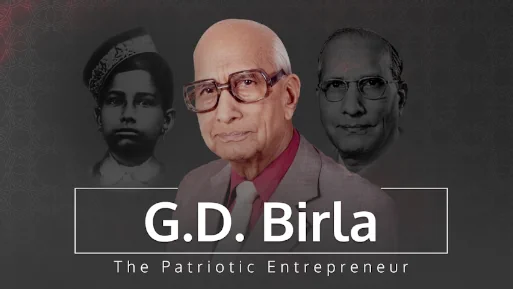Giving is in fact living
03 October, 2014 | Livemint
ShareRajashree Birla
03 October 2014
Livemint
The act of giving brings about a different kind of renewal, that of hope
It all goes back to over 150 years, rooted in history. At that point in time, the idea of philanthropy was intrinsically linked with religious piety. So, the very first act of giving by our elders in the Birla family was for the protection of cows. Way back in the 1880s, the Birla family donated over Rs.1 lakh for setting up goshalas (shelters for the protection of cows) in Kolkata. This continues even today. Because we look upon the cow as sacred. The principle of sacredness and faith in the divine underlined our family’s munificence, manifested in the beautiful abodes of worship. This is a continuing legacy in the Birla family. The fundamental belief being that here in these temples, people and seekers find peace, an inner calm and joy in celebrating life. Spirituality is the driving factor for this giving.
By early 1900, the Birla family began to take a keen interest in education, influenced by renowned educationist Pandit Madan Mohan Malaviya. Our family supported educational charities in Kolkata and in Mumbai teaming up with Jamnalal Bajaj. In 1918, our family established the first high school in Pilani. In fact, what started as a small school in Pilani, evolved into a unique university under the tutelage of G.D. Birla. Today BITS Pilani is a nonpareil temple of learning, a tribute to his vision of true education. To spark the desire for learning, our elders also opened a Sanskrit library in Benares and a library in Kolkata.
With G.D. Birla, my grandfather-in-law, the act of giving became even more pronounced. Dadoji, as we all fondly called him, was greatly influenced by the father of our nation, Mahatma Gandhi. There developed a special bond between the Mahatma and Dadoji. Between the two, there was immense mutual admiration. In one of his letters, Gandhiji wrote and I quote—“God has given me mentors and I regard you as one of them”. Likewise, Dadoji, would always say that he was the Mahatma’s follower. In fact, when he wrote his memoirs, the title that he gave was In the shadow of the Mahatma. Under Gandhiji’s influence, Dadoji felt that his wealth was to be used to assist every endeavour of Gandhiji. For more than 25 years, he supported Gandhiji’s nationalism with his money. In Gandhiji, he found a leader who only thought of the needs of others and not of himself. Dadoji’s giving was for a cause and for the man he looked upon as an icon. At Gandhiji’s request, he gave Rs.2 lakh for the Harijans and soon began to lead the Harijan Sevak Sangh. He also gave Rs.70,000 for the Aligarh Muslim University. In the 1940s, at the behest of Sardar Vallabhbhai Patel, Dadoji contributed Rs.25 lakh to establish the Birla Vishwakarma Mahavidyalaya College in Baroda. He gave wholeheartedly because he believed in the power of education.
Dadoji believed in the trusteeship concept of management, which was espoused by Gandhiji. This meant that a part of your profits be always ploughed back towards meaningful welfare-driven activities aimed at the larger good of society. Today, the culture of caring and giving is very much a part of our DNA.
With my husband Adityaji, the concept of giving took an additional turn. He subscribed to the adage “If you give a hungry man fish one day, he will eat it and the next day he will be starving again. Instead, if you teach him to fish, he will never go hungry during his lifetime.” So, he gave generously of his wealth to enable people to become self-reliant and eke out a living.
Let me share with you an interesting story. As you know, India, our nation is a land of paradoxes. Here, you can see extremes far beyond one’s imagination. So it is not uncommon to find millions of children out of school, even though we have made our mark on the intellectual map of the world. It is not uncommon to see children stretching their palms. It is not uncommon to have little boys and girls at traffic signals, selling newspapers, magazines, a string of flowers, or shine shoes at kerbs.
Delve a little deeper into their lives, and one will discover that most of them are destitutes. Having migrated from the villages, they try to eke out a living from the streets and make the pavement their home. This has been a recurrent story since ages and continues today as well.
From the early 1970s, seized of this concern, Shankarrao Chavan, then chief minister of Maharashtra, brainstormed on plausible solutions of this problem, with Adityaji.
For him, Adityaji was a humanitarian par excellence. A visionary, who could be depended upon to help the chief minister mitigate this issue of destitute children taking to begging for alms.
The chief minister had a lofty vision of abolishing begging in Bombay (now Mumbai) and parts of Maharashtra. For destitute children, for juveniles to be looked after, a rehabilitation centre seemed an imperative.
Together, Adityaji and Chavan blueprinted a strategy of building a home for children. But this home needed to bring a new meaning to the lives of these unfortunate kids. Their goal was that these children should never return to the streets. They should never be reduced to begging. They should become self-reliant. To do so, they would be trained in a vocation that best suited their aptitude. A vocation that would help them secure employment and get on with life as responsible working citizens.
Based on this ideology, Adityaji backed by the government, spawned “Mangal Mandir”, a new abode for destitute children, in 1979, rechristened a decade ago as “The Aditya Birla Centre for the Welfare of Children”.
From 1979 to date, we have managed to reach out to 3,000 boys. Every year, 200 boys are trained at our orphanage. What is most rewarding is that more than 95% of these boys have found jobs or are involved in small enterprise start-ups. For all of them, the years spent at the centre have been indeed memorable and a great learning experience. Several of them are still in touch with us. Our giving has made and continues to make a huge positive difference to the lives of these children.
I vividly recall a conversation between Adityaji, Kumar Mangalam Birla, my son, and me, where he made a profound statement, which is etched in our soul. Adityaji said: “I believe, that it is in giving that we receive.”
Over the last two decades, we have institutionalized this spirit of giving and caring for the marginalized in our group, besides it being ingrained in our family. Through the Aditya Birla Centre for Community Initiatives and Rural Development, we work in 3,000 villages and reach out to seven million people. Of course, there is a long road ahead.
On a very personal note, I want to share with you that “giving is in fact living”. This is my deep-rooted conviction. To me, giving is an expression of joy, love and caring. It is being useful, to those around us and to the world, in concrete ways. Giving is like blessing your own life. Because when you give with an open heart, the good that you do for the other person comes back to you in some form of a blessing.
The act of giving, in my view, brings about a different kind of renewal—that of hope. It is a life reaffirming act. When you reflect, in the quiet of your soul, you realize fully well that God has given you and me, an abundance, of his grace. All of us have a moral duty to share some part of it, in any way we can, to enhance, to make a difference to the lives of those who need our support, and to society at large.
I recall, what Stephen Grellet, the prominent French missionary, said many moons ago: “I shall pass through this world but once. Any good, therefore, that I can show to any human being, let me do it now. Let me not defer nor neglect it, for I shall not pass this way again.” Let this be your mantra during the Daan Utsav and beyond.
Rajashree Birla is Chairperson, Aditya Birla Centre for Community Initiatives and Rural Development.






